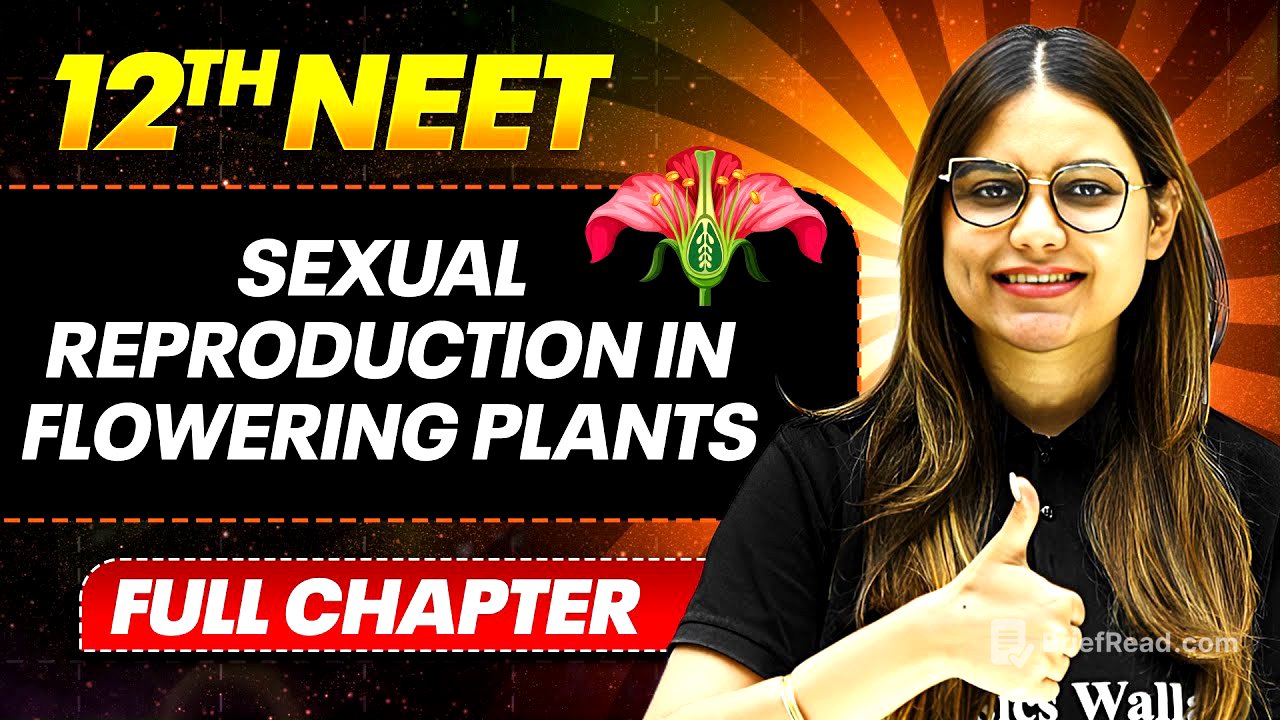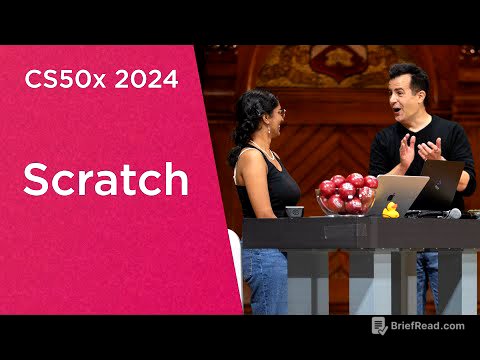TLDR;
This YouTube video by Lakshya NEET provides a comprehensive overview of sexual reproduction in flowering plants. It covers essential topics such as flower structure, micro and macrosporogenesis, pollination, fertilization, and post-fertilization events, including seed and fruit development. The lecture also addresses unique reproductive strategies like apomixis and polyembryony.
- Flower structure and function
- Pollination types and adaptations
- Fertilization and post-fertilization events
Introduction [0:00]
Yashika Ma'am welcomes students to the backlog elimination series, focusing on sexual reproduction in flowering plants. The aim is to clear backlogs and reinforce understanding through revision, using animations to enhance learning. The lecture is designed to be flexible, allowing students to pause and review content at their own pace.
Basic introduction [2:57]
The chapter will focus on angiosperms, or flowering plants, distinguishing them from algae, bryophytes, pteridophytes, and gymnosperms. Angiosperms are unique because they are the only flowering plants. The lecture will cover gametophytic and sporophytic plant bodies, explaining that sporophytes divide through meiosis to produce haploid spores, while gametophytes undergo mitosis.
Flower [15:10]
Flowers appear when a plant reaches sexual maturity, marking the reproductive phase. The diversity in flower types reflects adaptations for sexual reproduction. Flowers are colorful and fragrant to attract pollinating agents, aiding in the production of fruits and seeds. While flowers are often used for human purposes, their primary role is to facilitate sexual reproduction in plants.
Events in sexual reproduction [23:53]
Sexual reproduction involves pre-fertilization, fertilization, and post-fertilization events. Pre-fertilization includes gametogenesis (formation of gametes) and gamete transfer, often facilitated by pollination. Fertilization is the fusion of gametes. Post-fertilization involves the development of the embryo, ovary into fruit, and ovules into seeds. Hormonal and structural changes within the plant lead to the development of floral meristems, which eventually form flowers.
Parts of a flower [33:23]
A flower consists of a pedicel (flower stalk) that supports a swollen thalamus or receptacle. The flower has four whorls: calyx (sepals), corolla (petals), androecium (stamens), and gynoecium (pistils). The gynoecium is the innermost whorl, with pistils or carpels as its basic units. The androecium, or male sex organ, consists of stamens. The calyx and corolla are accessory whorls that aid in attracting pollinators but are not directly involved in reproduction.
Androceium and microsporogenesis [43:26]
The androecium, or male sex organ, is composed of stamens, each with an anther and a filament. The filament has a proximal end attached to the thalamus or petal and a distal end connected to the anther. A typical anther is bilobed and dithecous, containing two thecae (microsporangia) in each lobe. Microsporogenesis involves the formation of microspores inside the microsporangia.
Pollen grain [1:21:05]
Pollen grains are male gametophytes developed from microspores. They have two layers: the outer exine, made of sporopollenin, and the inner intine, made of pectin and cellulose. The exine is resistant to physical and biological degradation, aiding in pollen preservation and fossilization. Germ pores are present where sporopollenin is absent, facilitating pollen tube emergence.
Structure and development of male gametophyte [1:30:26]
Pollen grains undergo asymmetric mitotic division to form a large vegetative cell and a small generative cell. In two-celled pollen, the generative cell floats within the cytoplasm of the vegetative cell. Pollen is shed at this stage in many angiosperms. The generative cell divides mitotically to form two male gametes, resulting in a three-celled pollen grain.
Pollen allergy and pollen products [1:50:35]
Pollen from wind-pollinated species can cause allergies, leading to respiratory disorders like asthma and bronchitis. Examples include Parthenium (carrot grass), Amaranthus, and Chenopodium. Pollen products, rich in nutrients, are marketed as food supplements, particularly in Western countries, and are consumed by athletes and racehorses to enhance performance.
Pollen viability and pollen banks [1:54:46]
Pollen viability refers to the period pollen grains retain the ability to germinate. It varies among species and depends on environmental conditions like temperature and humidity. Examples include rice and wheat, with viability lasting only 30 minutes, and legumes, with viability lasting several months. Pollen banks store pollen in liquid nitrogen at -196°C for later use in plant breeding programs.
Gynoecium and Macrosporogenesis [2:02:01]
The gynoecium, or female reproductive part, consists of pistils or carpels. A single pistil is monocarpellary, while multiple pistils are multicarpellary. Multicarpellary pistils can be apocarpous (free) or syncarpous (fused). A pistil has three parts: stigma, style, and ovary. The ovary contains a placenta, which supports ovules (megasporangia) connected by funicles.
Pollination [2:56:55]
Pollination is the transfer of pollen from the anther to the stigma. There are three types based on the pollen source: autogamy (self-pollination within the same flower), geitonogamy (pollination between different flowers on the same plant), and xenogamy (cross-pollination between different plants). Autogamy requires bisexual flowers, while geitonogamy involves unisexual flowers on the same plant.
Agents of pollination [3:51:39]
Pollination is facilitated by various agents, including biotic (living) and abiotic (non-living) factors. Biotic agents include insects, birds, bats, snails, snakes, lemurs, lizards and rodents, with insects being the most common. Abiotic agents include wind and water, with wind being more prevalent.
Adaptations in pollinated flower [3:58:27]
Insect-pollinated flowers have sticky pollen grains, are colorful, and produce fragrances and nectar to attract pollinators. Wind-pollinated flowers have light, non-sticky pollen, well-exposed stamens, feathery stigmas, and produce large quantities of pollen. Water-pollinated flowers have thin, long pollen grains with a mucilaginous covering.
Pollen pistil interaction [4:34:40]
Pollen-pistil interaction involves the recognition of pollen by the pistil, leading to either acceptance or rejection. Self-incompatibility is a genetic mechanism where the pistil rejects pollen from the same plant. Filiform apparatus guides the entry of pollen tube.
Double fertilisation [5:07:30]
The video does not contain information about this chapter.
Post fertilisation events [5:11:45]
The video does not contain information about this chapter.
Endosperm and its development [5:12:35]
The video does not contain information about this chapter.
Embryo [5:27:52]
The video does not contain information about this chapter.
Seed [5:32:52]
The video does not contain information about this chapter.
Fruit [5:43:50]
The video does not contain information about this chapter.
Apomixis [5:46:37]
The video does not contain information about this chapter.
Polyembryony [6:08:52]
The video does not contain information about this chapter.
Thank You Bacchon [6:10:00]
The video ends with a thank you message to the students.









